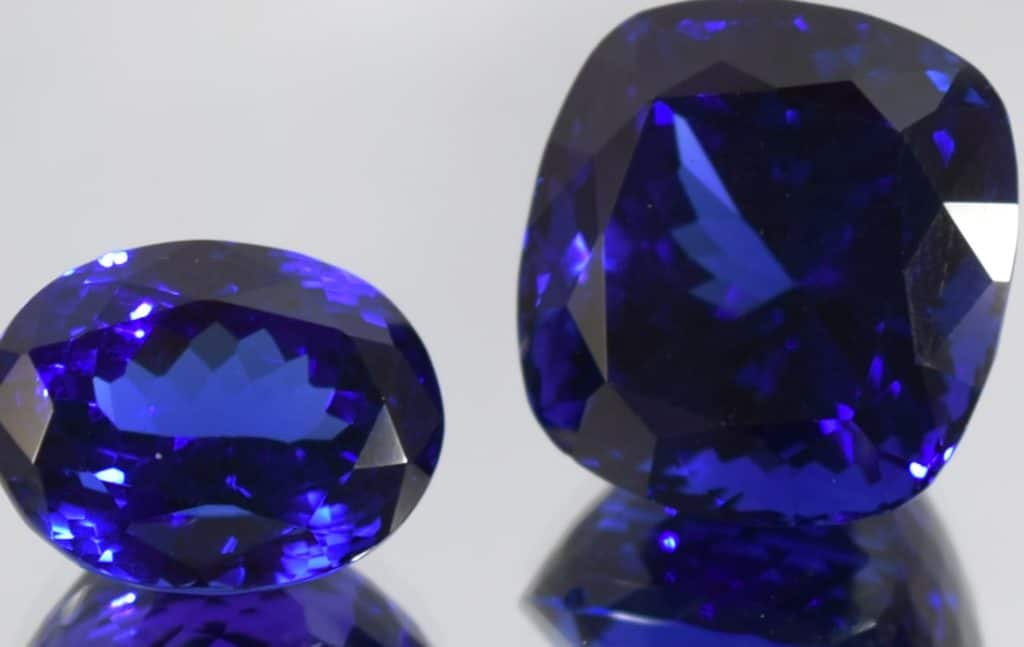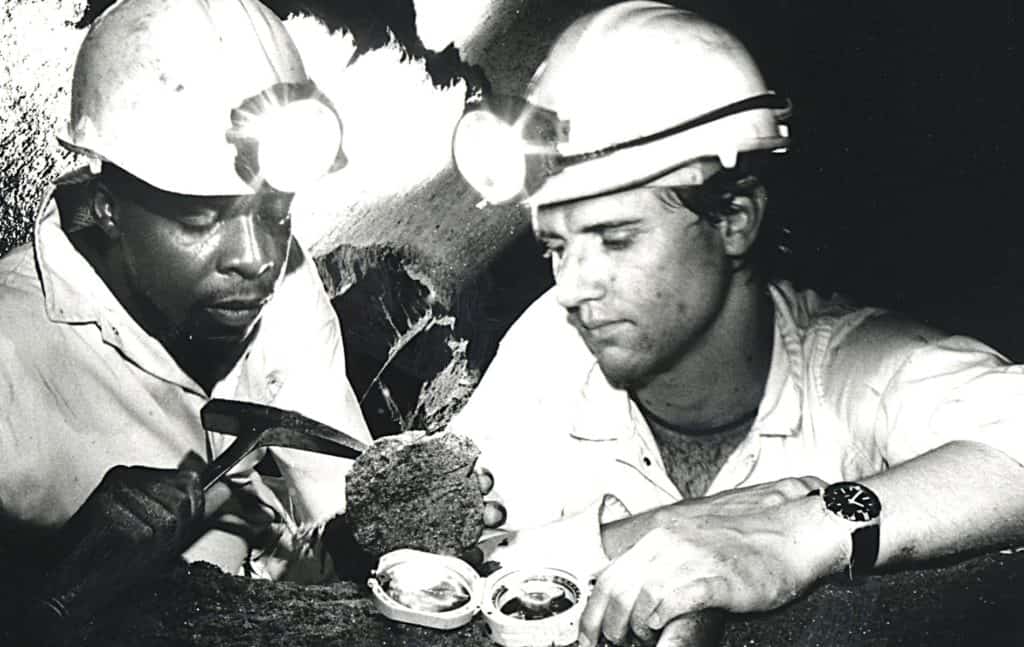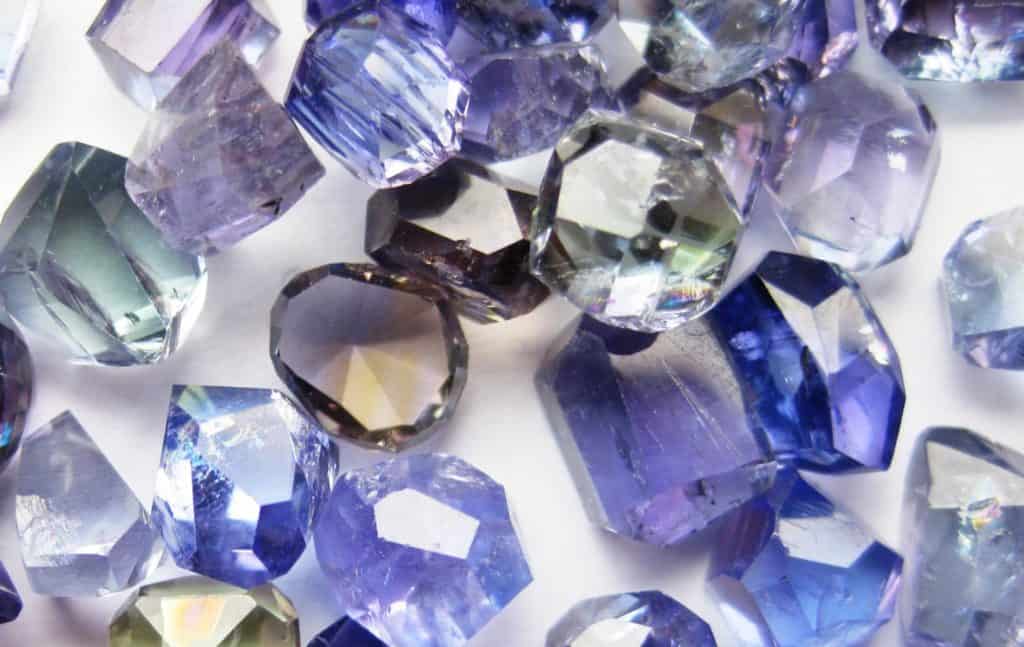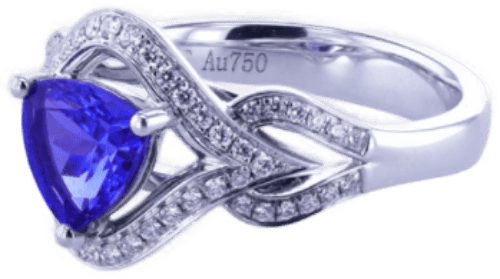Ever since this rare blue gemstone Tanzanite today was first discovered in 1967, it has been admired for its truly unique beauty. The hermosa piedra azul traces its way back to Tanzania, at the base of the mighty Mt. Kilimanjaro.
Lo que la mayoría de la gente no sabe es que "Tanzanita" es un nombre comercial para la "Zoisita Azul", acuñado por el muy famoso Tiffany y compañía. Algunas personas se refieren a ella como la Piedra de nacimiento de diciembrepero el mundo la reconoce como la rara y brillante piedra azul.
Tanzanite is a part of the Zoisite minerals family or the silicate family. The Zoisite mineral can naturally be found in many shades and hues like pink, green, blue, etc., or may even be colorless.
La Piedra se encuentra entre tonos de azul a un tinte púrpura-azulado. Aunque no es tan antigua como las demás piedras preciosas, la tanzanita ha sido reconocida como la 2nd piedra preciosa más admirada y popular.
La popularidad de esta rara piedra preciosa puede atribuirse a su color y al hecho de que una marca mundialmente reputada como Tiffany, la avale firmemente.
La tanzanita es una rara piedra preciosa de color multidimensional que refleja vibrantes matices de azules y violetas. Lo que la convierte en una de las piedras preciosas más raras es que la probabilidad de encontrar tanzanita cualquier otro lugar, excepto las colinas de Mererani, cerca de Arusha (Tanzania), es casi imposible

Tanzanite comes from a legend that says that when lightning struck the foothills of the Mererani Hills, a wildfire engulfed the grasslands around the area.
Una vez extinguido el fuego, los pastores locales volvieron a la zona y descubrieron que lo que quedaba eran piedras azules brillantes; la rara piedra preciosa que llamamos Tanzanita.
Más tarde fue descubierta por un geólogo portugués que estudió la piedra y descubrió que se trataba de un mineral de zoisita. Tiffany and Co. se hizo con la piedra y la introdujo en el mundo.
Today, other smaller gemstone dealers are also legally mining and supplying the gemstone. However, it’s not available in very large quantities and only a hundred and fifty miners have been granted the license to mine it.
This rare blue gemstone was declared a birthstone for December by the American Gem Trade Association in 2002. It is the birthstone for the zodiac signs, Aries and Pisces. Tanzanite shares its birthstone of December status with 2 other blue gems, Turquoise and Zircon.
Este rara gema azul también ha adquirido una posición importante en el Feng Shui, ya que significa pureza y fuerza. Se cree que mantener esta rara gema azul en una habitación atrae la calma y la paz.
Its presence in the workplace is believed to relieve stress and maximize productivity. The gemstone has also found its place in the world of healing crystals, spiritual energy stones, Chakra healing stones, and also for physical healing.

La tanzanita se extrae y se encuentra en una región muy pequeña que se extiende a lo largo de sólo 4 km de ancho y 2 km de largo.
Tras el descubrimiento de la piedra en 1967, se extrajeron unos 2 millones de quilates de esta rara gema azul en Tanzania. Estas minas fueron nacionalizadas por el gobierno de Tanzania en 1971. Los recursos son limitados, por lo que hubo que poner en marcha un proceso de extracción racionalizado.
In 1990, the government of Tanzania divided the mining area into 4 categories namely Blocks A, B, C, and D. The blocks were divided between the large operators and the local miners. For instance, El Tanzanite Experience tiene su mina situada en el bloque D.
However, the rapid pace at which the gemstone is being mined may soon lead to the depletion of the gemstone and complete exhaustion of the supply. It is thus also referred to as the “gemstone of a generation”.
La tanzanita no es la única piedra preciosa azul, pero se considera única y exclusiva por su rarísimo "azul". La gama de tonos azules que ofrece la piedra tanzanita es única para ella y, a veces, también puede verse un tinte violeta o púrpura.
In comparison to other minerals, like Diamond or Sapphire, Tanzanite stands out. Although Sapphire is still the most popular blue gemstone, Tanzanite is second. Otra razón que puede haber aumentado la popularidad de la piedra preciosa es que es igual de hermosa, y a veces más, que el zafiro, pero cuesta mucho menos.
Additionally, Tanzanite is an all-naturally created gemstone, as compared to the widely available Sapphire created in a lab. The raw, natural, and authenticity of the gemstone make it more attractive.
En comparación con un diamante, la tanzanita es mucho más barata y más "moderna". Los diamantes originales son extremadamente caros y lo que puedes pagar por un diamante minúsculo podría darte una tanzanita mucho más grande.
While a diamond will always be considered a ‘classic’ and ‘timeless’ gemstone, Tanzanite has a raw and very new look to it. The color, here again, makes it a popular choice.

Una amplia gama de productos químicos y físicos Propiedades de la tanzanita han sido ampliamente estudiados por geólogos e investigadores. Vamos a hablar de las 3 propiedades más distintivas:
El color de esta gema azul es lo que más la distingue. Aunque se considera una gema azul rara, en realidad es una gema pleocroica. El pleocroísmo es una propiedad física que permite que la piedra preciosa parezca de un color diferente cuando se mira desde diferentes direcciones.
A single piece of this gemstone can appear blue, violet, or even red, depending on which direction we are looking from. Some can display 2, 3, or even more different shades from different directions.
El azul brillante sigue siendo el color más codiciado de la tanzanita y también el que más valor tiene. Por ello, el corte de la gema requiere una gran habilidad para garantizar que el color azul se maximice.
Tanzanite is a rare blue gemstone that looks beautiful in jewelry. However, the use of tanzanite must be restricted to jewelry that is worn on special occasions or ones that do not go under heavy abrasion or impact. Thus, earrings and pendants are preferred over rings.
The durability of a gemstone is measured in terms of hardness, or its scratch resistance. Tanzanite properties in terms of durability or hardness are about 6.5 on, which is low for daily wear as it may easily get scratched. However, the design of the ring, if made in such a way that the stone does not receive any direct pressure or impact, will increase its durability.
The other measure of durability is toughness or breakage resistance. Every stone has at least one direction, which is directly impacted and may lead to a break or chipping. However, as mentioned earlier, the design plays an important role in ascertaining the direct impact on the stone.
La piedra también es sensible a los cambios extremos de temperatura y puede romperse por ello. Nuestra guía de compra de tanzanita profundiza en este concepto. Por lo tanto, es necesario tener precaución al llevar esta gema azul.
The third measure of durability is color stability. Tanzanite scores well on this scale. However, like most gemstones, you must keep them away from acids or chemicals as they damage the stone. Tanzanite stones that have been heated and treated are more stable and are not affected by normal exposure to light or daily temperature changes.
Como la mayoría de las piedras preciosas, encontrar piedras de tanzanita más pequeñas es mucho más fácil, ya que están disponibles en abundancia. No se puede decir lo mismo de las piezas grandes. La mayoría de las piedras disponibles rondan los 5 quilates, las piedras de más de 50 quilates son muy raras.
Las piedras más pequeñas se suelen tallar para la joyería comercial. Por otro lado, las piedrasnes que tienen una coloración muy marcada se suelen utilizar para la joyería de diseño.
Big Tanzanite stones that have a valuable distinct color are often bought by collectors, investors, or even museums. In fact, the size of the Tanzanite also directly affects the color; the larger the stone, the larger the distance the light travels through it. Larger Tanzanite stones thus display a richer blue color.
Heat treatment is common practice for almost all tanzanite stones available in the market for commercial buying and selling. The heat treatment enhances the color or sometimes produces the rare blue color the gemstone is well known for. However, naturally blue-colored Tanzanite stones can also be found with miners. Some buyers prefer the non-treated tanzanite to the heat-treated one.
Tanzanite found in the markets, in jewelry settings, and otherwise, are all usually heat treated; and most customers and retailers prefer the heat treated Tanzanite for the improved color.
A common question that both retailers and customers of rare gemstones have is, is it real or fake? It’s no secret that fake gemstones are as easily available as real ones. So how can retailers and customers ascertain whether or not a tanzanite stone is real or fake?
Cuando se trata de la tanzanita, mucha gente vende Forsterita instead, a mineral that can be produced in the color and with similar properties as the Tanzanite stone. Corantine is another blue synthetic stone that may be mistaken for Tanzanite.
A la hora de comprar tanzanita, los compradores deben tener en cuenta las 4 C's que determinan la calidad, estas son:
Esto incluye el tono y la saturación. La tanzanita es muy rara vez sólo azul y suele tener un matiz de violeta. El color de la piedra se comprueba siempre como una combinación de ambos colores.
vB or violetish blue is used to denote Tanzanite which has 50% blue under white light. On the other hand, bV or bluish violet is used for one that is majorly violet.
This includes the inclusions or the presence of any natural flaws within the stone. It ranges from lowest to highest- Heavily Included (HI), Moderately Included (MI), Slightly Included (SI), and Eye Clean (EC).
This includes the finish, proportion, shape, and brilliance of the stone. These cuts are categorized as Too Deep, Too Shallow, or Well Cut.
Se refiere al peso de la piedra preciosa. 1 quilate es 1/5 de gramo y tiene 100 puntos. La profundidad de la piedra también modifica el peso en quilates, aunque las piedras sean idénticas.
Si tiene previsto comprar tanzanitala hermosa y rara piedra preciosa azul, para añadir a sus valiosas posesiones, es importante que trate sólo con distribuidores de tanzanita de confianza que ofrecen productos auténticos. Como ya se ha dicho, hay muchos minoristas que venden tanzanita falsa, bajo la apariencia de ser auténtica, así que si no está muy seguro de cómo comprobar la calidad, la apuesta más segura es comprar tanzanita en minoristas legales y de confianza como el Tanzanite Experience.
De paso, visite su museo, que es una de las muchas atracciones de Arusha. En el museo, podrás aprender más sobre esta hermosa piedra preciosa azul.
